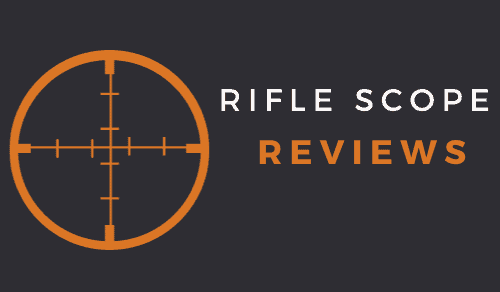As an Amazon Associate I earn from qualifying purchases. Amazon and the Amazon logo are trademarks of Amazon.com, Inc, or its affiliates.
The SII Big Sky series was initially introduced as a stepping-stone scope series between the Sightron SII scopes and the upper level (and more expensive) SIII line of scopes. When the SII Big Sky series was first introduced, it was initially marketed as the SII SS series. The name was eventually changed to the Big Sky series around 2008 because the SS designation was confusing to customers who thought that meant the scope was stainless steel.
The SII Big Sky models are built on a 1-inch tube but feature a higher quality glass compared to the standard SII scope line. The SII Big Sky glass is coated with Sightron’s proprietary Zact-7 Revcoat system that uses seven coatings on the lenses, which is the same coating used on the Sightron SIII line. This series also features Sightron’s Exactrack windage and elevation system, which is also found on the higher end SIII scope models.
This series is a noticeable jump is glass quality over the standard SII series, with some comparing the glass to the quality of the mid-range Leupold VX-3 series and the mid-range Bushnell Elite 4200 and 4500 series of scopes. Before 2015, the SII Big Sky series consisted of 16 models in different power ranges and reticles.
At last check, the SII Big Sky is only offered in 8 versions. In discussions with various Sightron managers and brand reps, I learned that the SII Big Sky sales had been far more popular than ever expected and was negatively impacting sales on Sightron’s higher-end SIII series of scopes.
That fact, coupled with the fact that the cost to produce the SII Big Sky series was pretty darn close to the costs associated with the SIII models, led Sightron to reduce the SII Big Sky series down to its top sellers within that series.
Here’s one area where the SII Big Sky scope models and the standard SII series of scopes differ: While the SII models are manufactured in the Philippines, the Big Sky models are produced at the Sightron facility in Japan, which is also where the Sightron SIII and Sightron SV models are made.
At one point, the SII Big Sky is/was offered in the following models:
- 3-12X42 (with 2 different reticle versions)
- 4-14X42 (with 3 different reticle versions)
- 6.5-20X50 (with 2 different reticles) – Prior to 2014, this model was produced with a 42mm bell versus the 50MM used now.
- 6-24X42 (with 3 different reticle versions)
The SII Big Sky series is what I could call a real “sleeper” series as not that many people have been introduced to it, and it’s a fantastic value for the money. The glass used on the Big Sky series isn’t quite as good as the ones used on the more expensive SIII series, but it’s pretty darn close.
I had the chance to compare a SII Big Sky model in 6X24X42 against a Leupold VX-3 EFR 6.5X20X40, and the Big Sky looked as good (if not slightly better) than the EFR in edge to edge clarity, and the street price is nearly $150 less than the Leupold street price. Don’t get me wrong, Leupold makes excellent stuff, but you pay a premium for the name.
Some things to note about the Big Sky line of scopes:
- At some point during their production Sightron opted to change from an AO adjustment on the ocular bell, over to a side focus set-up. As such, you’ll see both focus methods on different SII Big Sky scope models. Don’t let that confused you as both are still very much a part of the SII Big Sky line.
- Also, at some point during the production of the Big Sky models, Sightron opted to introduce some new power ranges that included ½ numbers. For example, the 6-20X42 model was changed over to a 6.5-20X44 model, and the 4-14X42 model was changed over to a 4.5-14X44 model. Don’t let the 1/2 power ranges confused you as those are legitimate SII Big Sky models as well.
If you happen to be shopping for a scope in the $450 to $600 range, I’d at least look at the SII Big Sky series because you might be missing out on some excellent optics.
If I sound like a fan of the SII Big Sky line, it’s because I am. At my last count, I had at least 6 of the SII Big Sky models in various powers mounted on different rifles.
Here are some commonly asked questions that I saw or heard regarding the SII Big Sky line of rifle scopes:
What are the differences between the regular SII models and the SII Big Sky models?
Although both are built on a 1-inch tube, the Big Sky series is made with higher quality glass, better eye relief, and more reticle options. Also, the Big Sky models are made at the Sightron factory in Japan, where the standard SII models are manufactured in the Philippines.
How far down with the Big Sky models focus down?
It varies by the specific Big Sky scope model and power range, but most will go down to at least 15 yards.
What was the highest power range offered in the Big Sky series?
To my knowledge, the higher magnification range that is offered in the SII Big Sky scopes is 6-24. If you wanted a power range higher than that in the Sightron scope line, you’d have to move up to the SIII series.
I’ve never really heard of this Big Sky line of scopes, so can you compare the glass quality on the Big Sky models to another scope brand to help quantify the clarity and brightness?
The best comparison I can personally provide with me the same one I mentioned earlier, which was a comparison between my SII Big Sky in a 6.5-20X44 and a buddy’s Leupold VX-3 EFR.
IMHO, the glass on the Big Sky was equal (and maybe even a little better in edge to edge clarity at full magnification). Now before anyone comes in and says something about me being a Sightron fan, you’d be right, so I probably have a bit of bias.
But, even my buddy, who paid almost full retail (which was something like $700) for his Leupold VX-3, was impressed with the glass on the Big Sky, and even more impressed when he learned that I only paid about $500 for it.
Why did Sightron stop making the SII Big Sky scope models?
Based on my conversations with Sightron reps, it sounds like the decision was based on profits:
The SII Big Sky sales were cutting into the sales of the more expensive SIII series. And, since the costs to manufacture an SII Big Sky scope sounded pretty close to the costs to manufacture a Sightron SIII model, that trend was both cutting into the profitability of the Big Sky models and undercutting sales on the SIII models.
What did Sightron replace the SII Big Sky scope models with?
According to Sightron reps I’ve spoken with, the SII Big Sky scope series was replaced with the Sightron S-TAC series of scopes.
UPDATE – At the end of 2017, Sightron opted to discontinue the entire SII Big Sky line of scopes in favor of a new line called the S-TAC series (which I’ll review later). That being said, there are still quite a few Sightron SII Big Sky scopes that are for sale (both new and pre-owned).
Here are a few new in box Sightron SII Big Sky scopes that I found still available:
In addition, in a few pre-owned models that I located as well:
If you don’t see anything listed for the pre-owned models, then I couldn’t locate any for sale.
I’ve been working in the firearms and sporting optics industry for over 20 years, with a personal and professional interest in all things related to rifle scopes, Through a combination of work experience, formal training, and personal experiences, I have extensive experience mounting, testing, and evaluating different rifle scope models across most major optical brands.

